Unboxing: What's Inside the NetApp AFF A300 Storage System
The NetApp AFF A300 system was presented at the end of September 2016 at the annual NetApp Insight conference and replaced the AFF8040 and AFF8060 solutions. A pair of A300 controllers is located in one case and occupies only 3U, which is half as much as the AFF8040. The maximum system expansion is 384 SSDs. Given the availability of 15 TB SSDs, this is more than enough.
One of these systems came to us, the company IT-GRAD, the largest supplierIaaS in Russia, in hand. Recently, we received a shipment that contained a pair of NetApp A300 controllers in one chassis and a DS224C disk shelf with a set of 24 SSD disks of 3.8 TB each. In this article we will talk about the advantages of this solution and conduct anboxing, of course, sharing the most interesting photographs (the total weight of the images is 6 megabytes).
Who cares - we ask for a cat. All-flash storage system NetApp AFF A300 Here is the NetApp AFF A300 system at the back: On the left and right we can see massive power supplies, each of which has a capacity of 1460 watts. They occupy almost the entire length of the chassis of the system. Let's take a closer look at the ports:
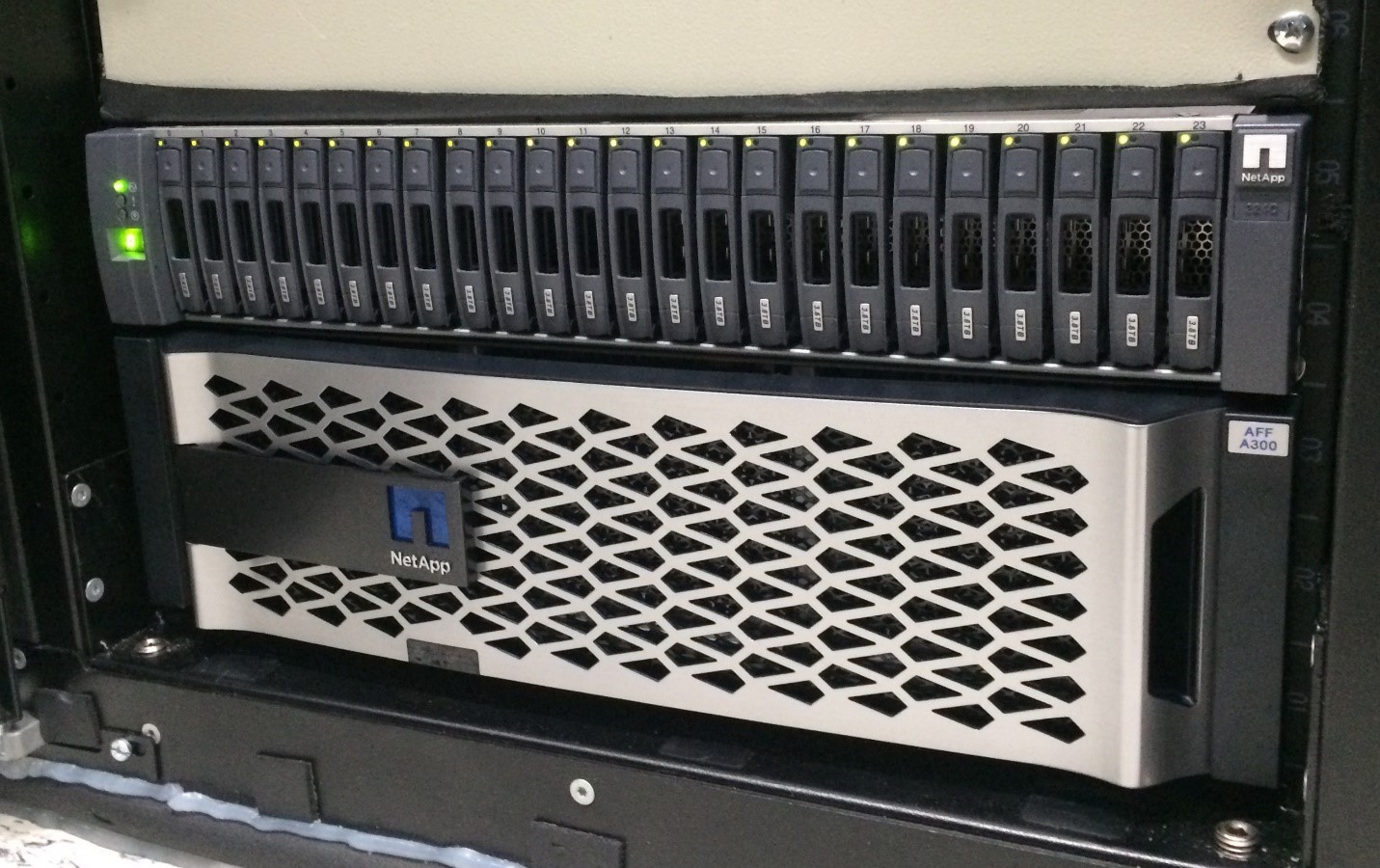
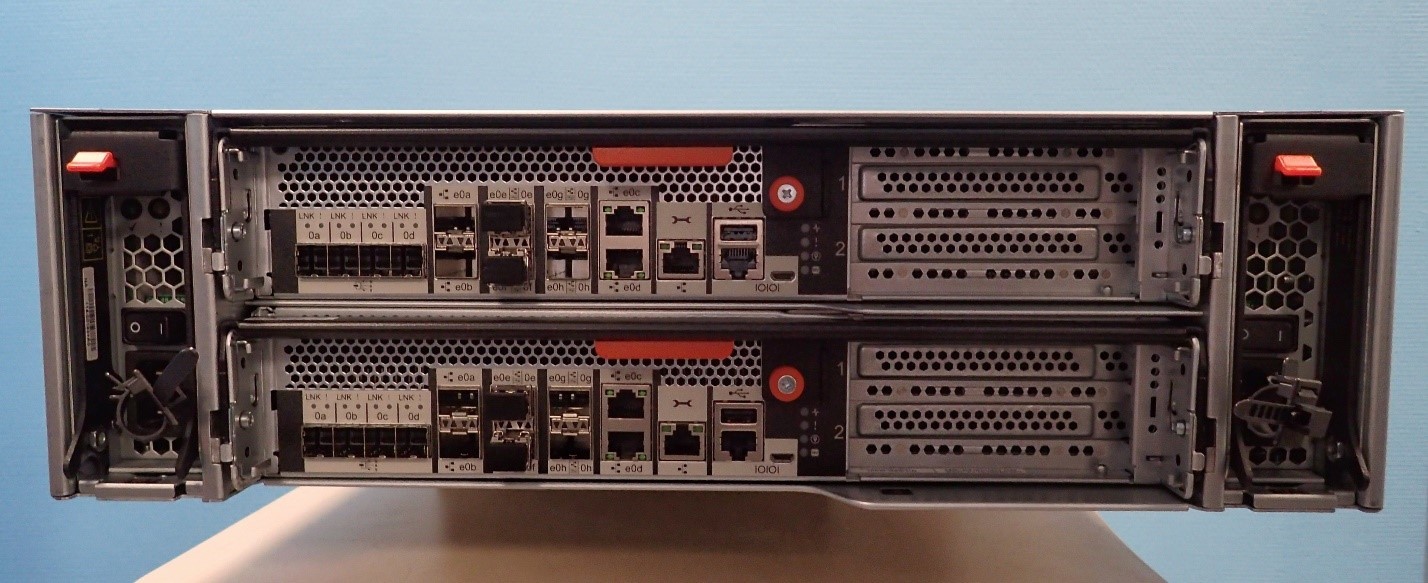
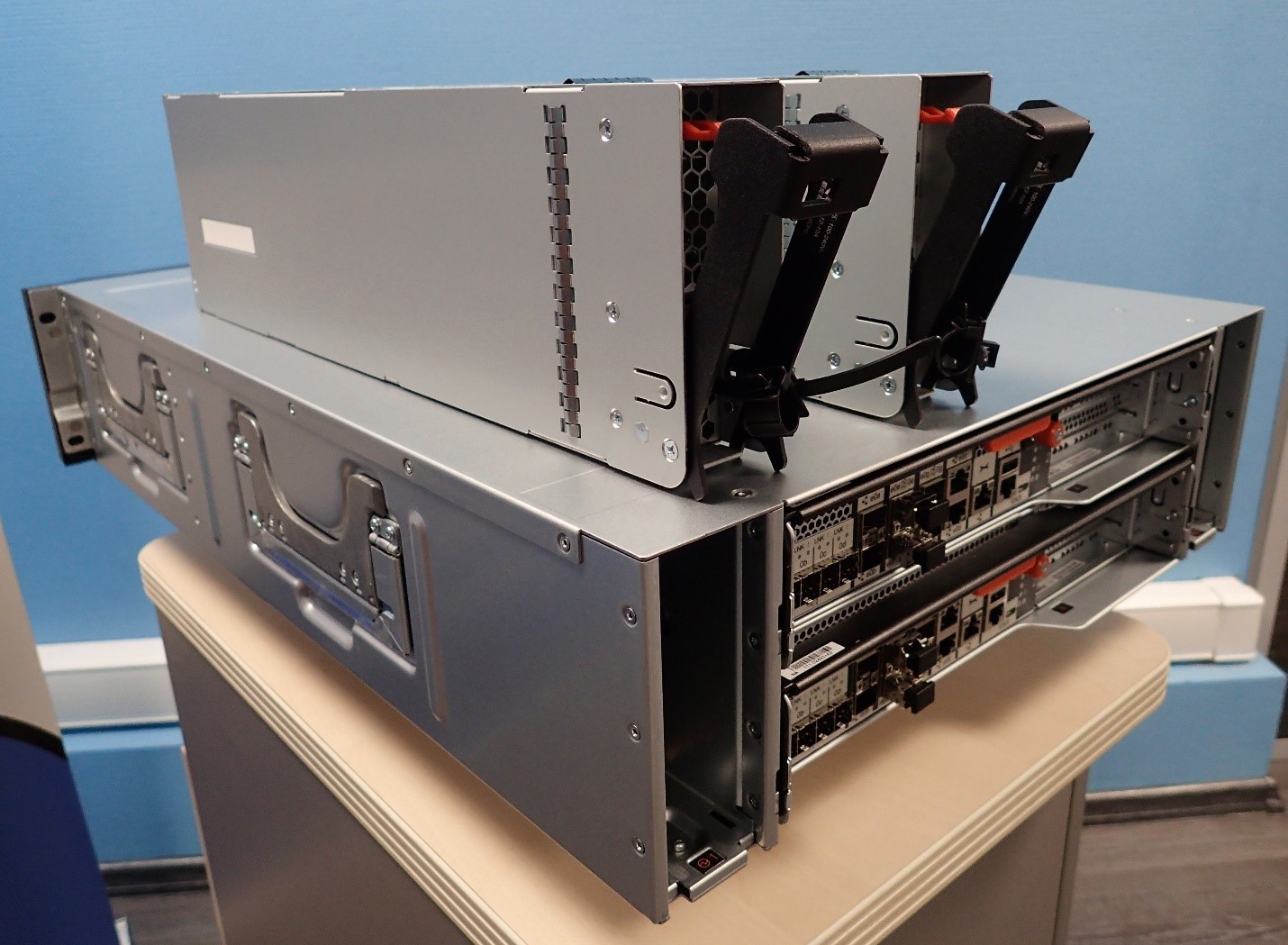
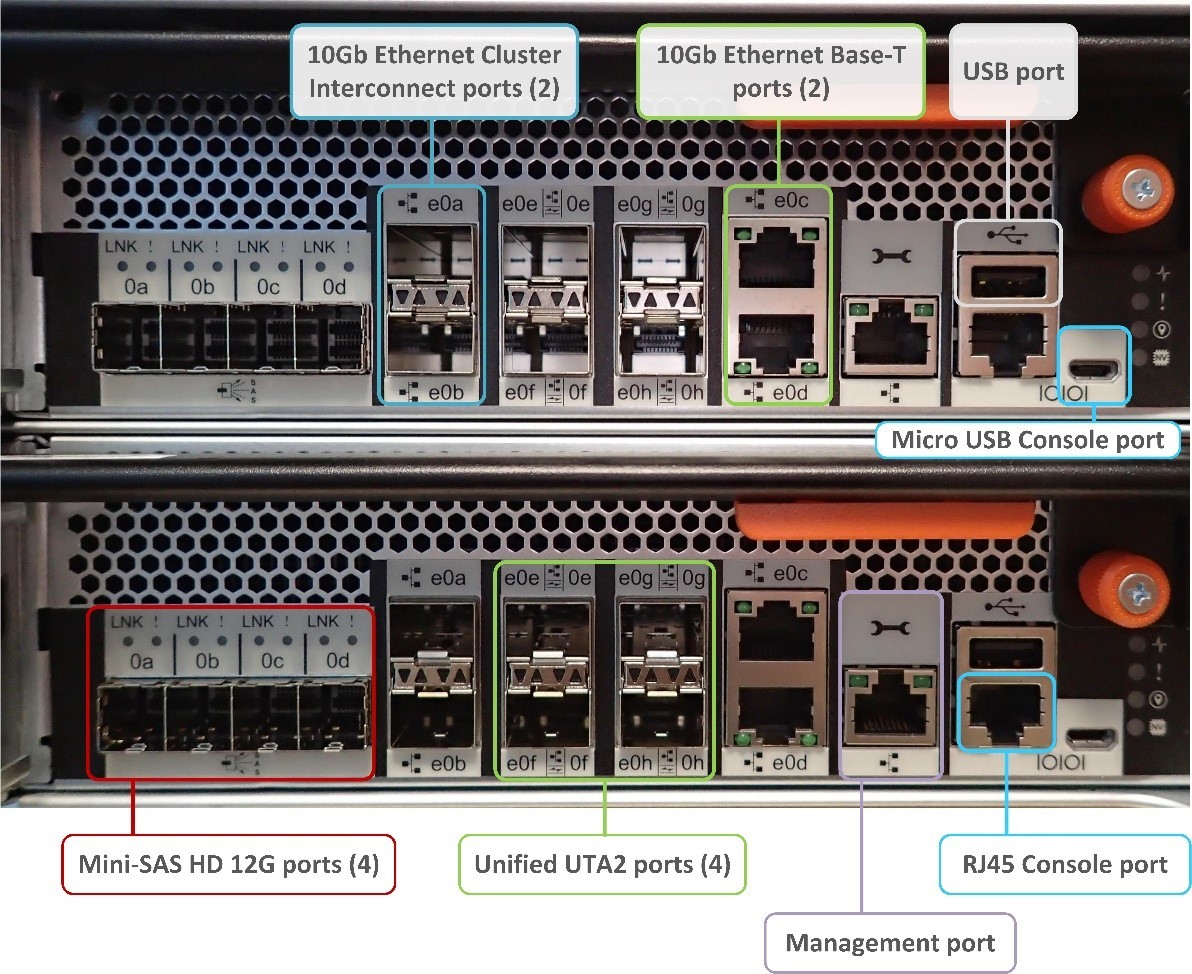
On the back of the iron box, we see the new Mini-SAS HD ports for connecting disk shelves, which now support 12 Gbps speed, and dedicated 10-gigabit ports for cluster interconnect, which allow expanding NAS clusters to 24 AFF / FAS controllers.
There are also built-in Base-T ports that support speeds up to 10 Gbps, four unified ports per controller for data transfer via iSCSI / NFS / CIFS / FCoE and FibreChannel 8/16 Gbps protocols. Ports are configured in pairs, and the mode of operation depends on the installed transceivers. Separately, we note that the console port, in addition to the standard RJ-45 port, received a performance in the form of Micro USB - a cable for connecting to it is included in the delivery.
Having studied the external features, it is time to look inside the solution. NetApp AFF A300 controllers have become more powerful: they got more cores and more memory. It looks like this: The
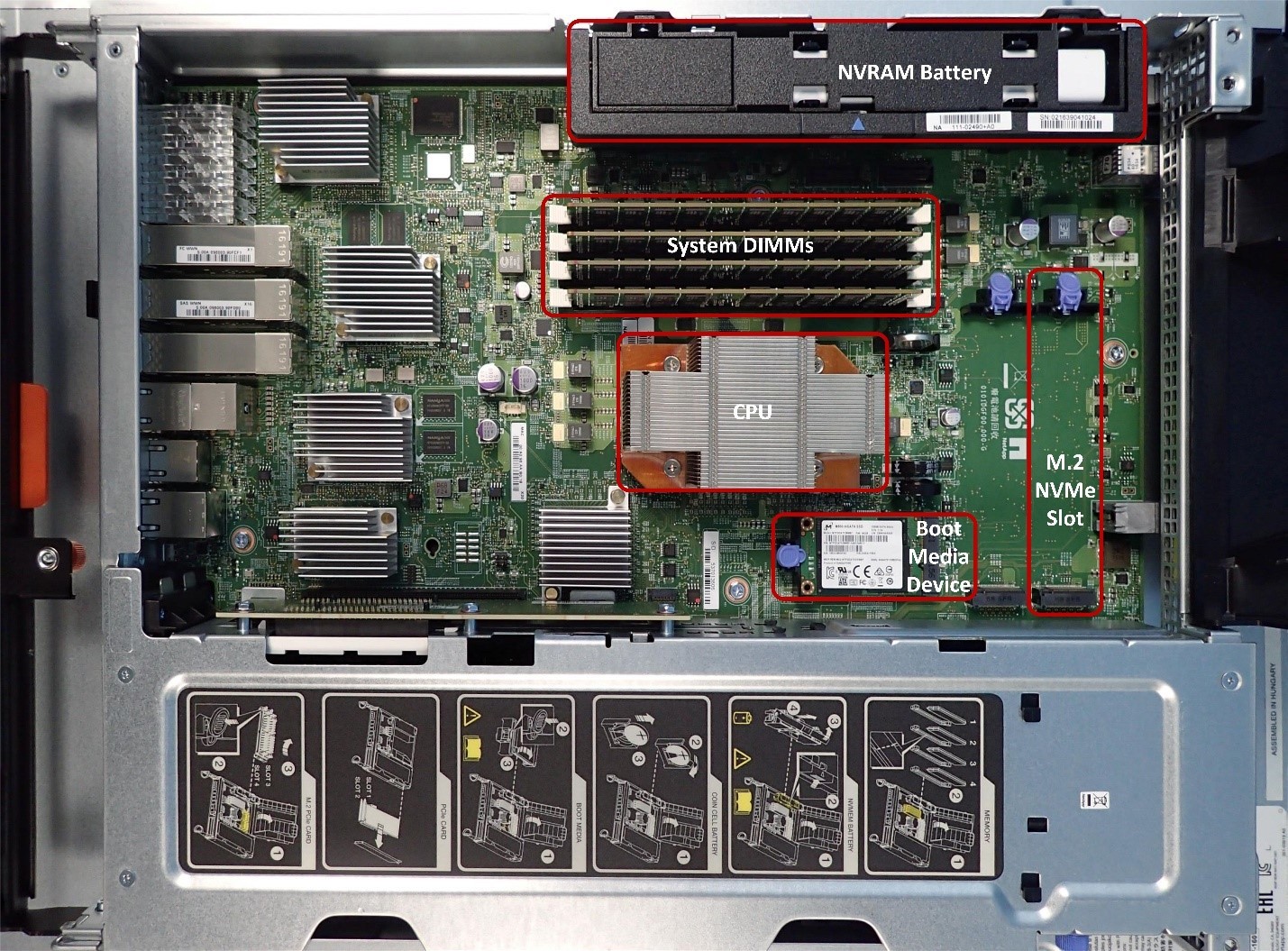
"brain" of the system is now represented by two new 16-core Intel Broadwell-DE processors with a frequency of 1.70 GHz. Each controller has 4 RDIMM ECC RAM modules of 32 GB each, which in total gives 128 GB, of which 120 GB is allocated for the cache, and 8 GB for NVRAM. Note that the boot media device is made in the form of 128 GB mSATA SSD.
It is worth mentioning that the A300 uses the same hardware platform that was used in the FAS8200, the difference between them is only in the absence of FlashCache NVMe modules, since they are not needed in the all-flash version. It is for this reason that we see two empty M.2 PCIe slots on the motherboard.
Below is a side view of the controller. Behind the removed wall, we see two PCIe3 expansion slots.
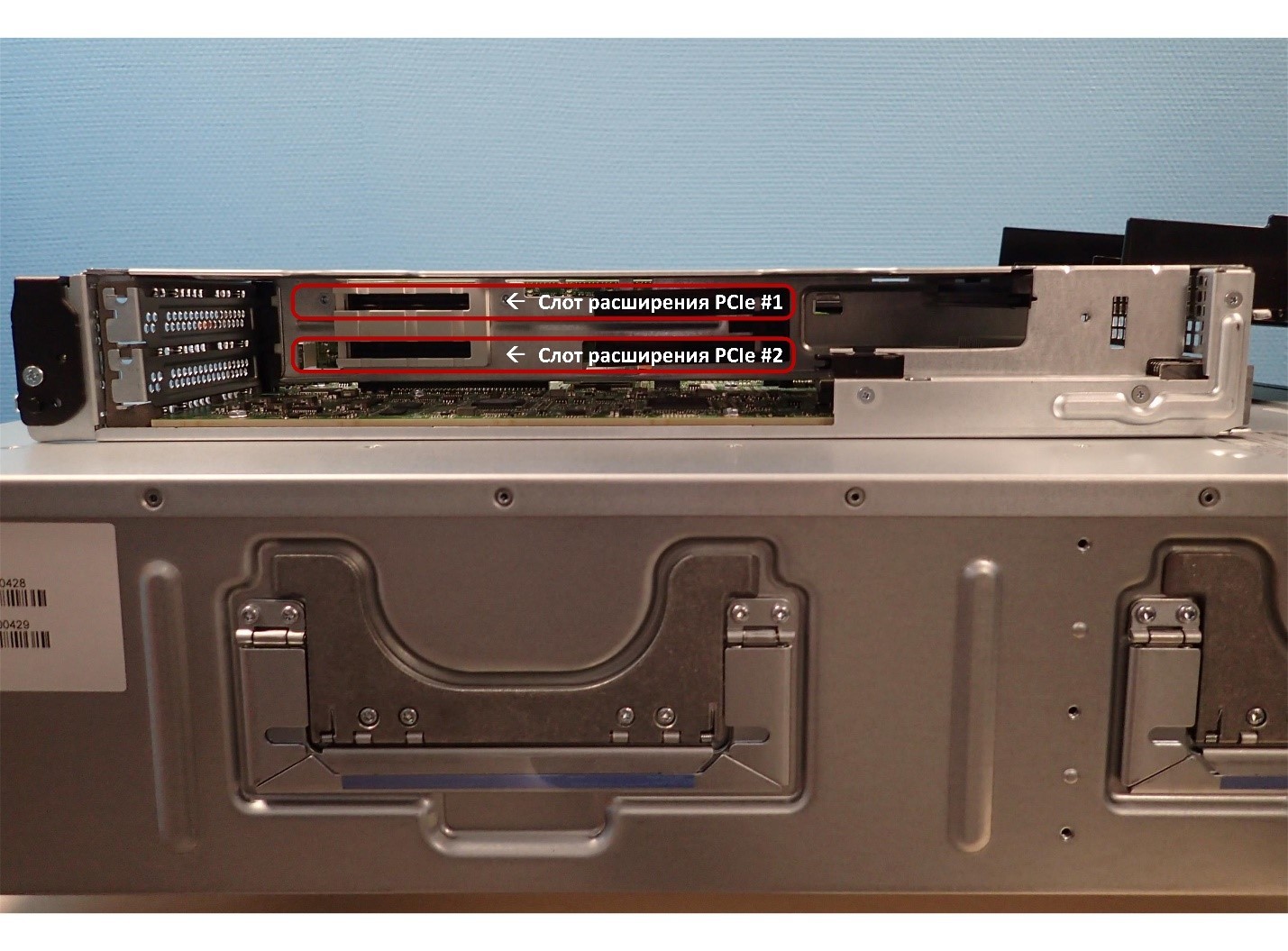
As you can see, there are not so many expansion slots. This is due to the fact that the NetApp A300 does not need expansion slots for FlashCache. Additional slots may be required to build a MetroCluster for FC-VI cards, through which NVRAM is mirrored to the second platform, but for these purposes you can use the built-in UTA2 ports. The system supports up to 384 drives, so there is no need to occupy SAS slots with HBA cards either.
Therefore, expansion slots are only needed for Ethernet or FC if there are not enough built-in ports on the controller. Considering that with ONTAP 9.1 NetApp supports 40-gigabit Ethernet and 32-gigabit FC ports, in the future a small number of expansion slots will not become a bottleneck for storage.
In the image below, you can see the characteristics of the Li-Ion battery for NVRAM power supply in cases of emergency power off - 7.2 V, 3.69 Ah, 26.56 Wh. The process of removing the battery is extremely simple: just push the button, lift the handle and pull it up along the guides on the side of the controller.
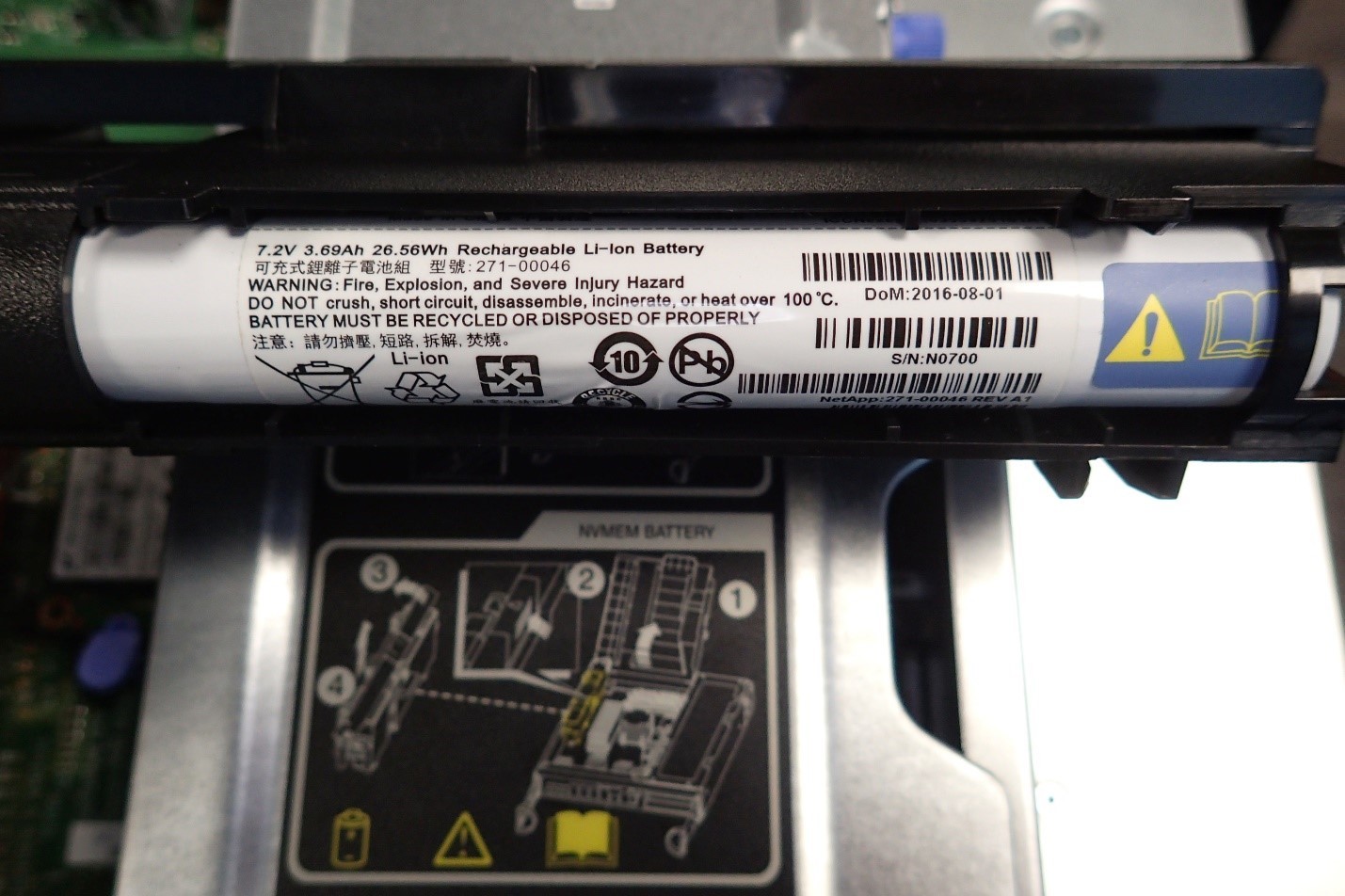
And here is the back view of the controller:

In the photo above you can see a warning sticker that says that the NetApp A300 weighs 37 kg and it’s better to transport the hardware together. As for the front of the system, behind the removed bezel hides a cooling system with the ability to hot-swap fans. You can see them in the image below.
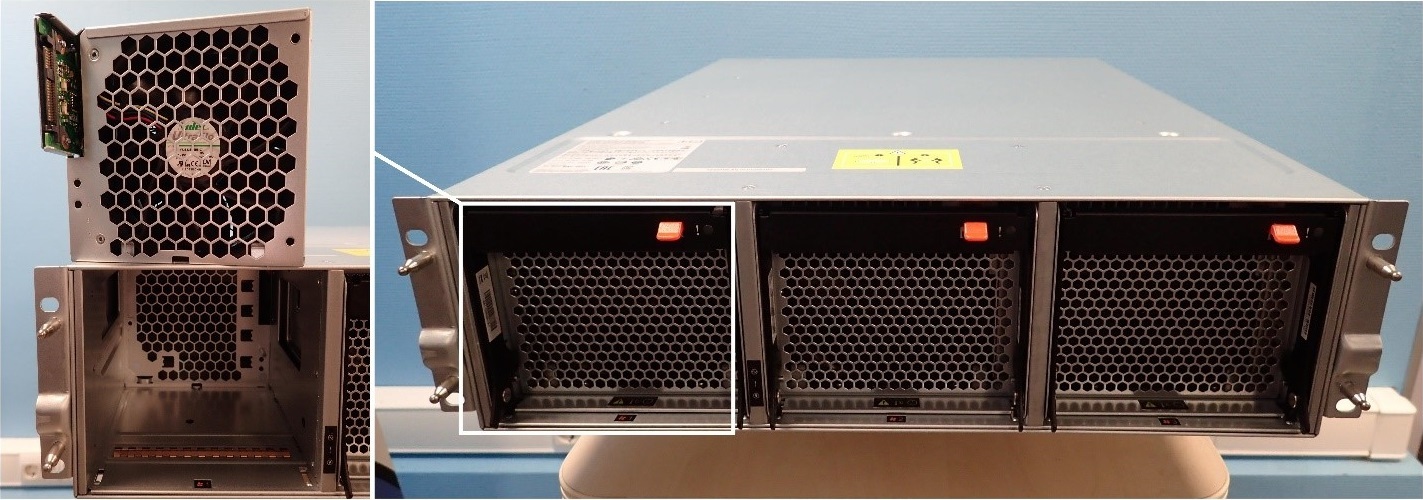
Next, we will see what our new system will have to deal with. Together with the A300 controllers, a new NetApp DS224C disk shelf arrived in which 24 SAS SSDs with a capacity of 3.8 TB each are installed.

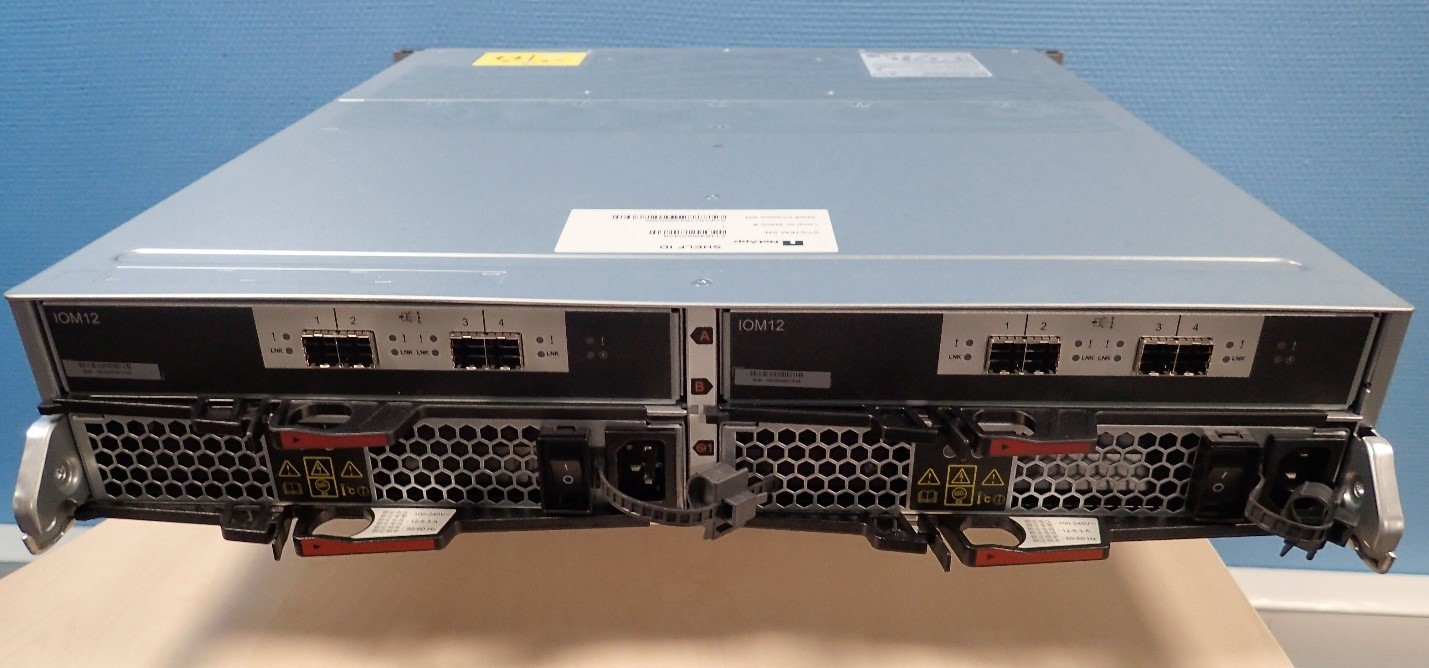
The DS224C disk enclosure has two IOM12 I / O modules, each of which has 4 12-gigabit SAS interfaces on board. The Alternate Control Path (ACP) network for shelf management no longer requires separate ports and works inside SAS connections. But the principle of naming the shelves has remained - Disk Shelf, the number of units occupied in the rack, the number of disks and the speed of the interface. “C” in the name means 12 in the hexadecimal number system - that is, 12 gigabits / s.
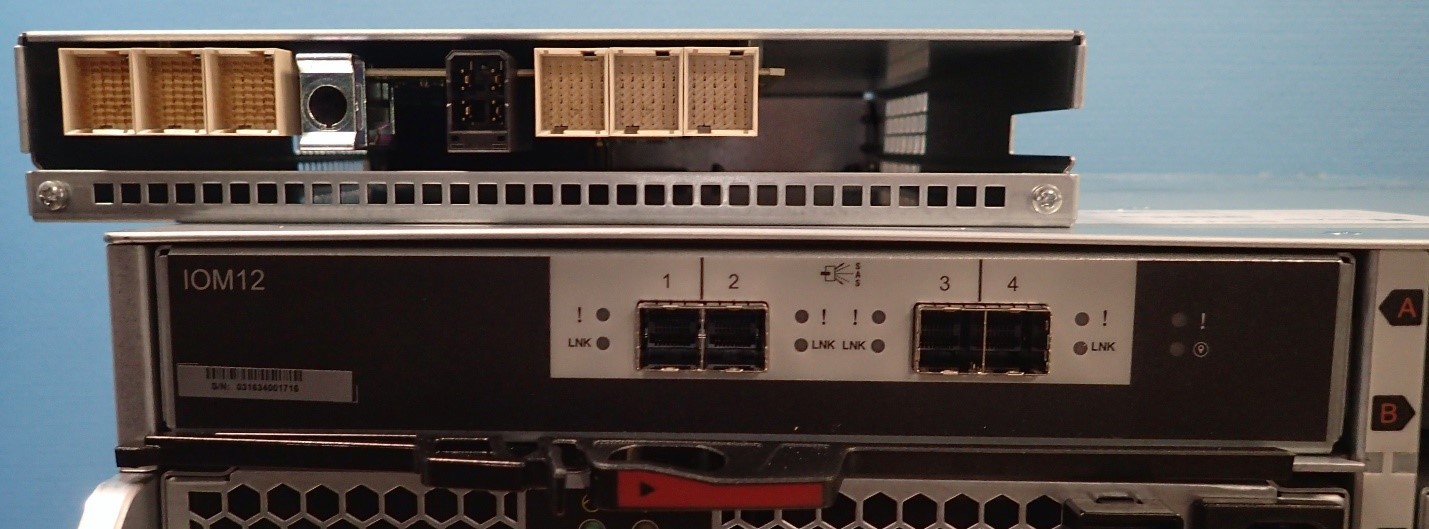
New Mini-SAS HD cables are now used to connect the disk shelf:
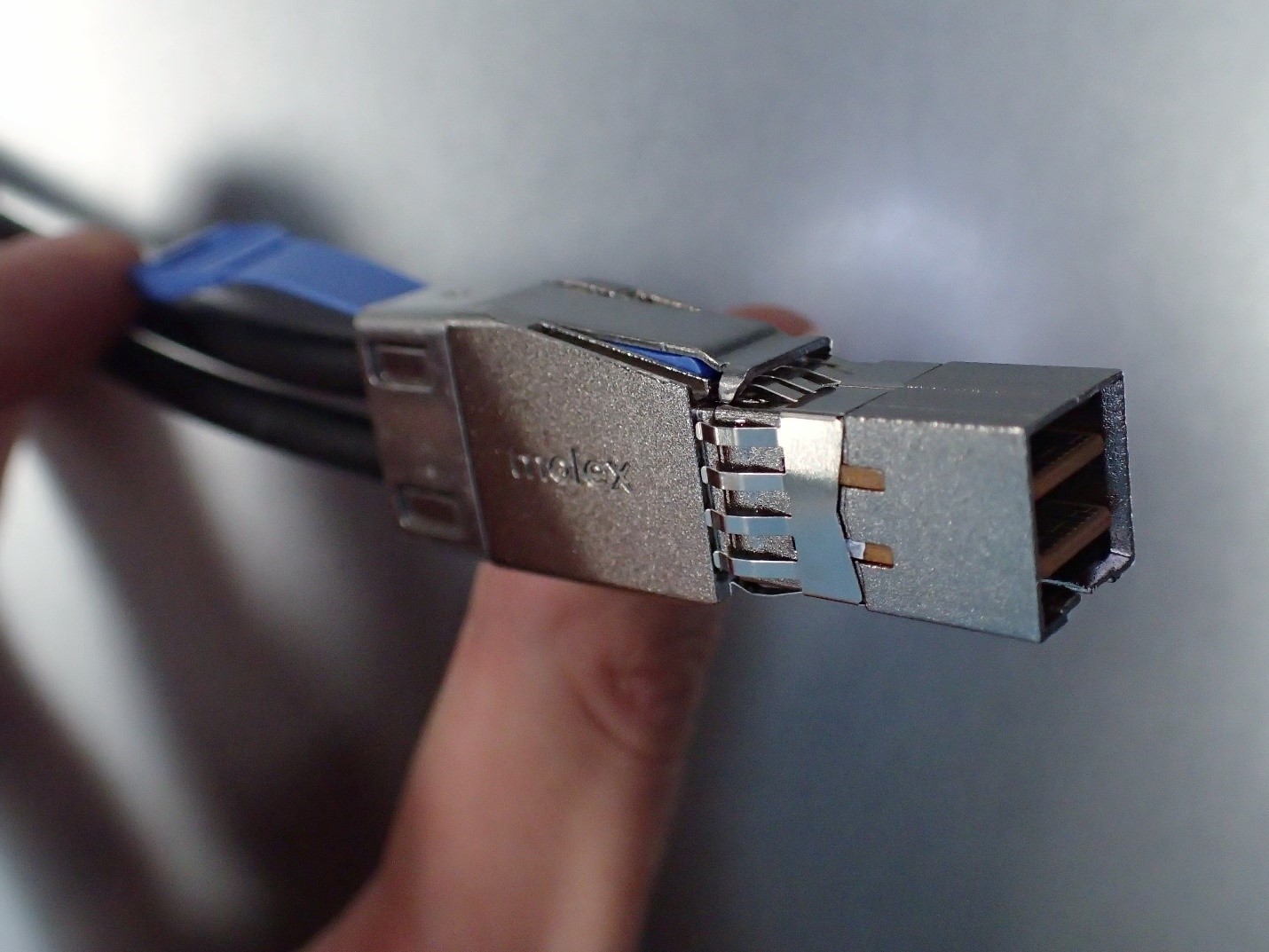
In the photo below we see the midplane interfaces for connecting IOM12 modules:
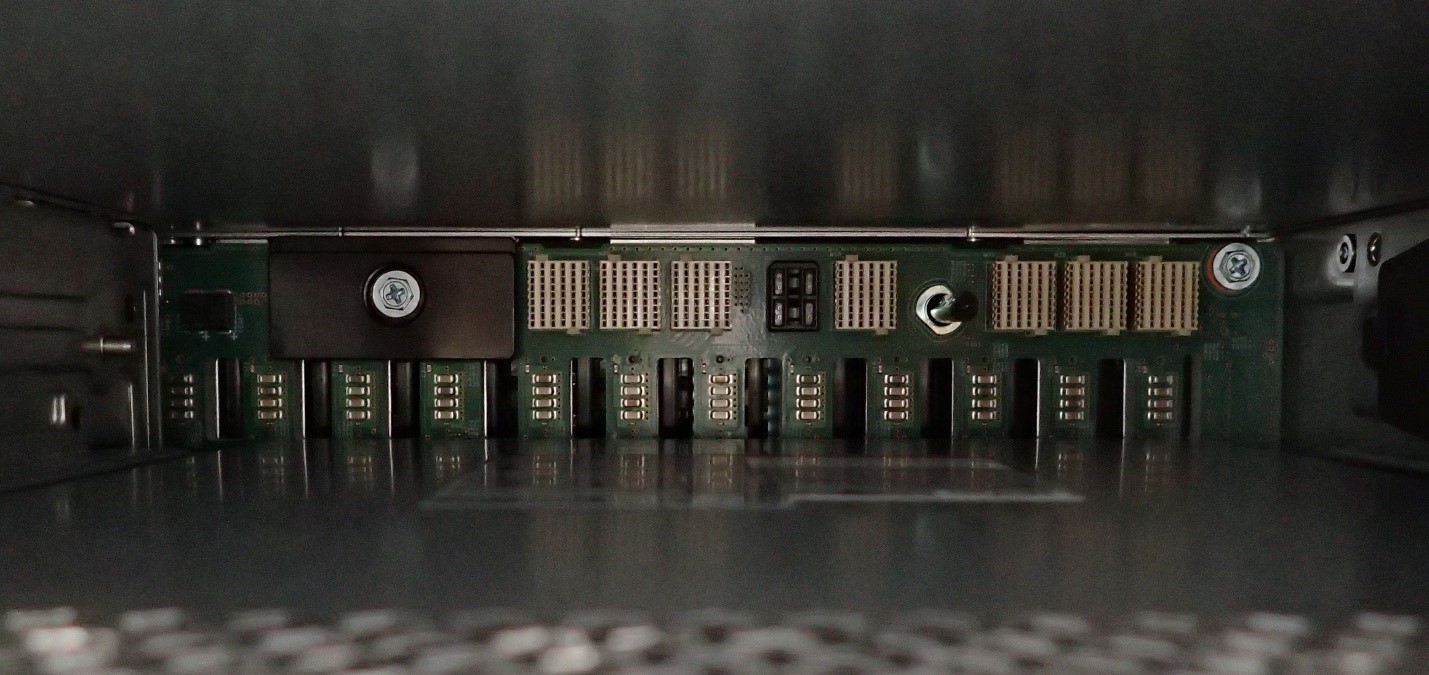
And here are the interfaces on the other side of the midplane for connecting drives:
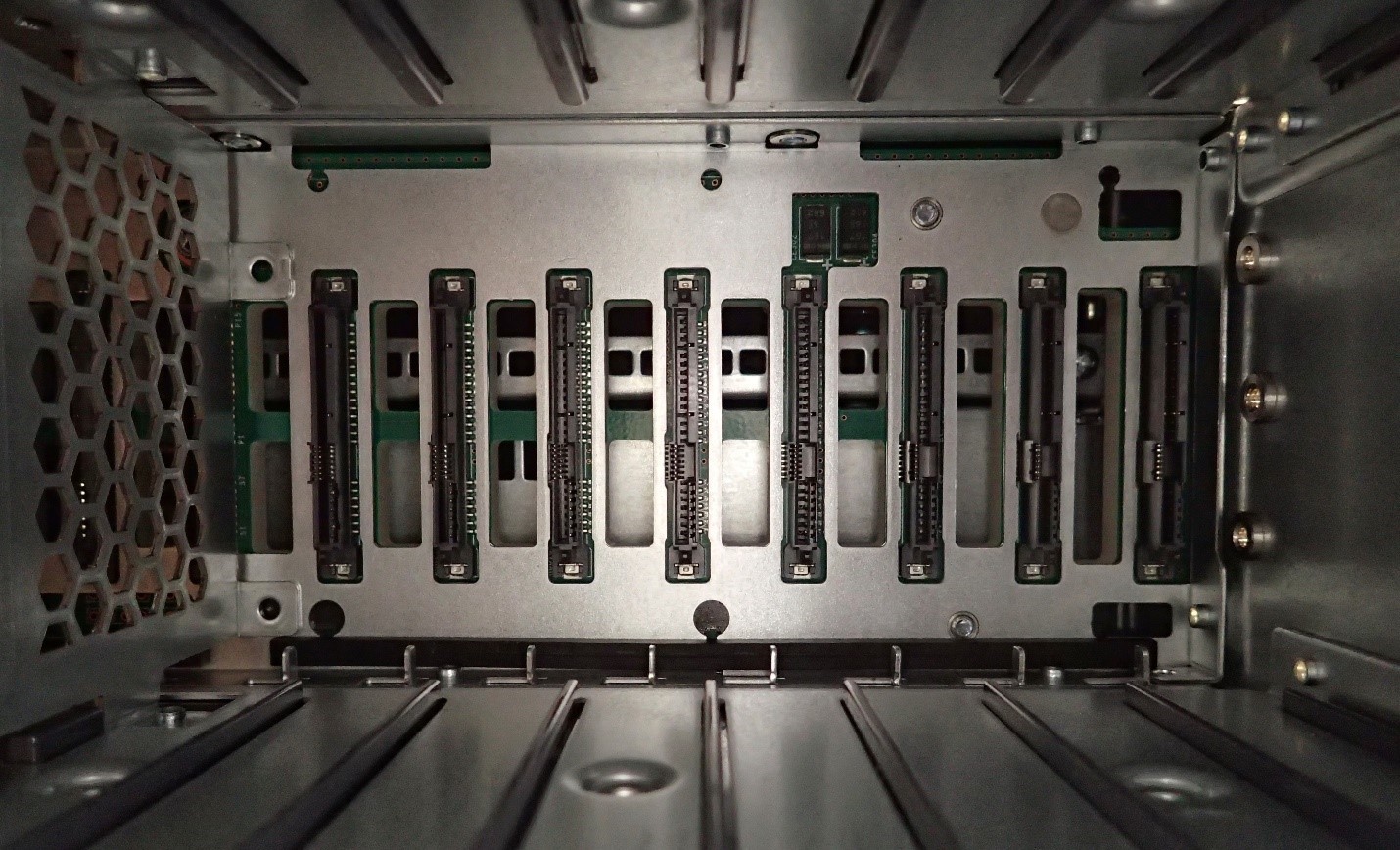
Of course, SSDs themselves cannot be ignored. Samsung’s PM1633a is installed in the system in the 2.5 ”form factor, replacing the PM1633 model that was discontinued in October this year. SSDs are made using 3D Vertical-NAND (V-NAND) technology and provide a throughput of 12 gigabits / s.
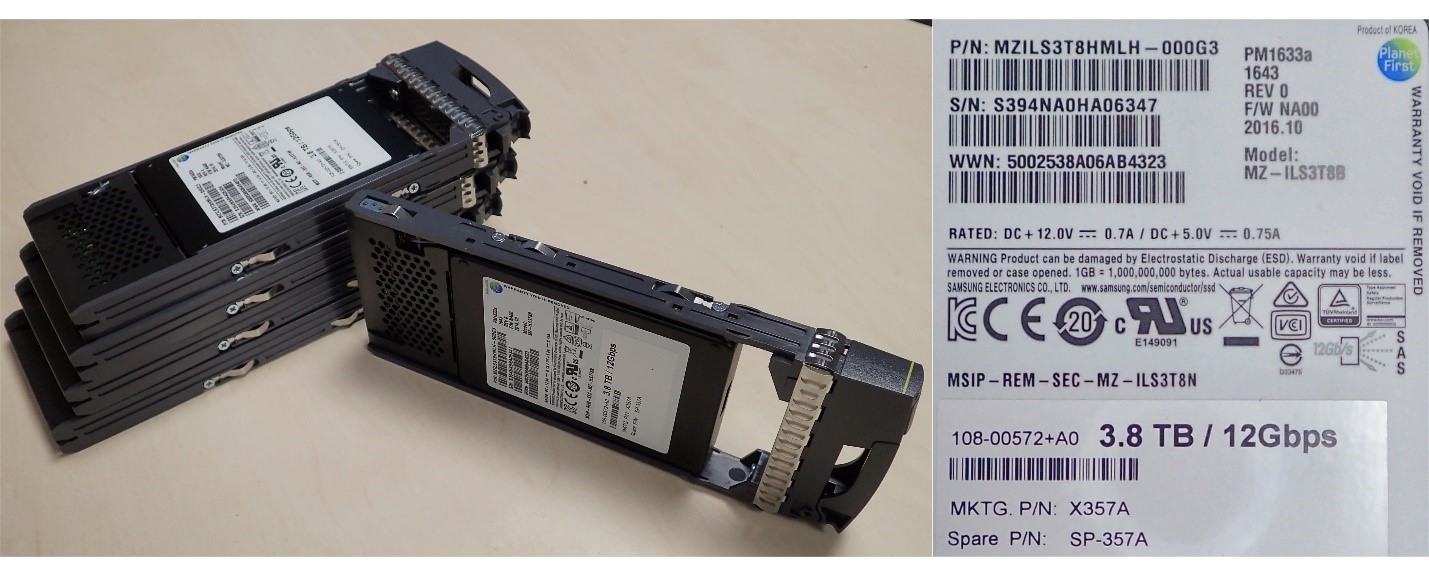
To get the most out of SSDs, the NetApp A300 runs ONTAP 9.1, where NetApp was the first storage vendor to support Multi-Stream Write technology for SSDs. In short, MSW technology associates data coming from the host with a specific stream. One stream contains data that is highly likely to change or be deleted at the same time. Data from different streams is written in different blocks on the SSD, improving the key parameters of the drives: durability, performance.
That's all, making sure of the integrity of the incoming set of equipment, we proceed to its installation and configuration - further, as they say, a matter of technology. We mount in the rack in the bottom five units - expansion by disk shelves will be made up. We make sealing of free units so that there is no "empty" air circulation between cold and hot corridors. Storage will be added to the cluster with other NetApp FAS-series storage systems. We connect the cables. The connected system is presented below:
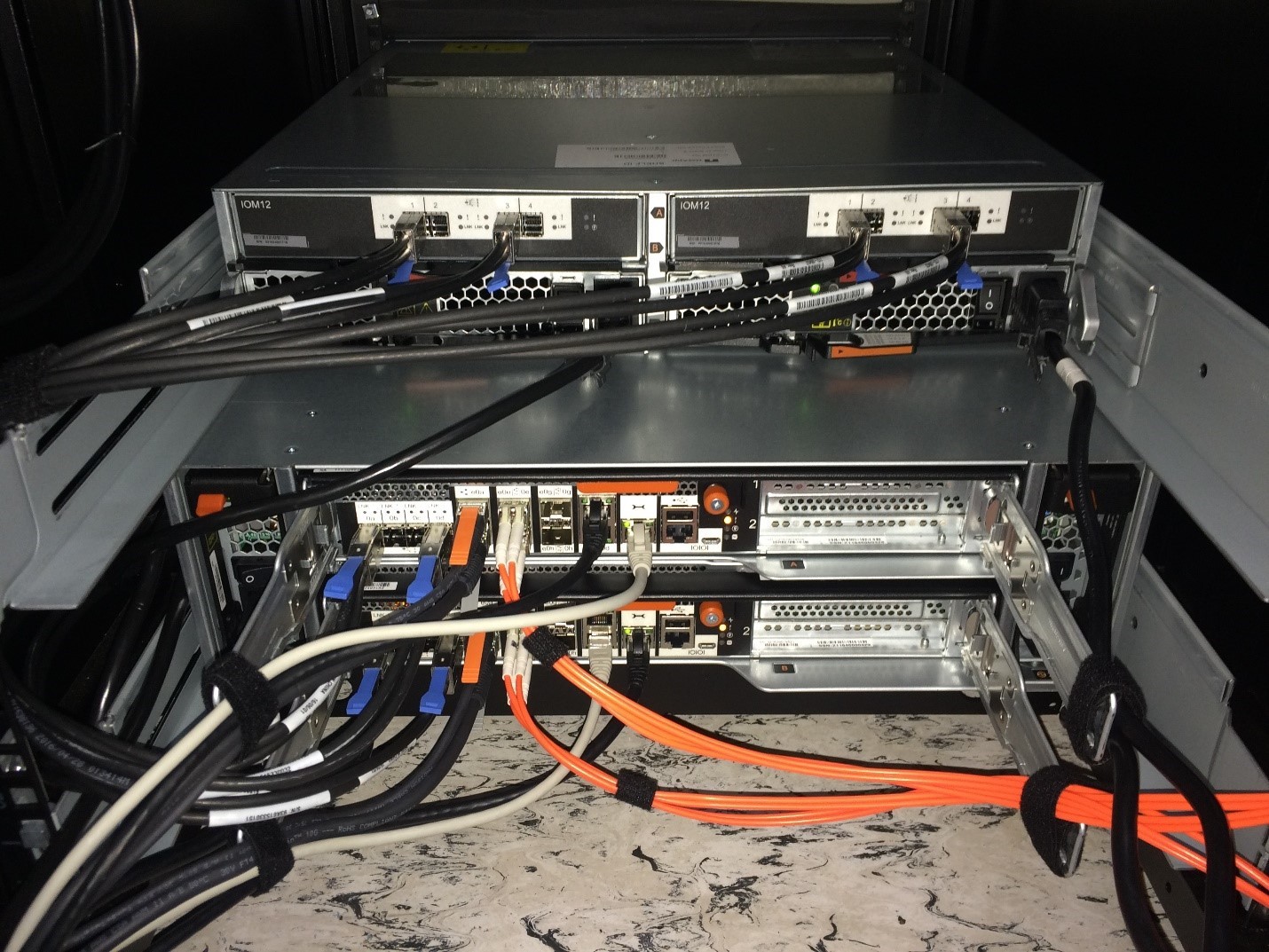
To learn more about the NetApp AFF A300 solution and other equipment provided by IT-GRAD, you can contact our center of competence and ask all your questions.
PS By the way, if you like "iron" in the same way as we do, we recommend you to pay attention to one of our previous unboxing servers Cisco UCS M4380, which can be found in our blog .
One of these systems came to us, the company IT-GRAD, the largest supplierIaaS in Russia, in hand. Recently, we received a shipment that contained a pair of NetApp A300 controllers in one chassis and a DS224C disk shelf with a set of 24 SSD disks of 3.8 TB each. In this article we will talk about the advantages of this solution and conduct anboxing, of course, sharing the most interesting photographs (the total weight of the images is 6 megabytes).
Who cares - we ask for a cat. All-flash storage system NetApp AFF A300 Here is the NetApp AFF A300 system at the back: On the left and right we can see massive power supplies, each of which has a capacity of 1460 watts. They occupy almost the entire length of the chassis of the system. Let's take a closer look at the ports:




On the back of the iron box, we see the new Mini-SAS HD ports for connecting disk shelves, which now support 12 Gbps speed, and dedicated 10-gigabit ports for cluster interconnect, which allow expanding NAS clusters to 24 AFF / FAS controllers.
There are also built-in Base-T ports that support speeds up to 10 Gbps, four unified ports per controller for data transfer via iSCSI / NFS / CIFS / FCoE and FibreChannel 8/16 Gbps protocols. Ports are configured in pairs, and the mode of operation depends on the installed transceivers. Separately, we note that the console port, in addition to the standard RJ-45 port, received a performance in the form of Micro USB - a cable for connecting to it is included in the delivery.
Having studied the external features, it is time to look inside the solution. NetApp AFF A300 controllers have become more powerful: they got more cores and more memory. It looks like this: The

"brain" of the system is now represented by two new 16-core Intel Broadwell-DE processors with a frequency of 1.70 GHz. Each controller has 4 RDIMM ECC RAM modules of 32 GB each, which in total gives 128 GB, of which 120 GB is allocated for the cache, and 8 GB for NVRAM. Note that the boot media device is made in the form of 128 GB mSATA SSD.
It is worth mentioning that the A300 uses the same hardware platform that was used in the FAS8200, the difference between them is only in the absence of FlashCache NVMe modules, since they are not needed in the all-flash version. It is for this reason that we see two empty M.2 PCIe slots on the motherboard.
Below is a side view of the controller. Behind the removed wall, we see two PCIe3 expansion slots.

As you can see, there are not so many expansion slots. This is due to the fact that the NetApp A300 does not need expansion slots for FlashCache. Additional slots may be required to build a MetroCluster for FC-VI cards, through which NVRAM is mirrored to the second platform, but for these purposes you can use the built-in UTA2 ports. The system supports up to 384 drives, so there is no need to occupy SAS slots with HBA cards either.
Therefore, expansion slots are only needed for Ethernet or FC if there are not enough built-in ports on the controller. Considering that with ONTAP 9.1 NetApp supports 40-gigabit Ethernet and 32-gigabit FC ports, in the future a small number of expansion slots will not become a bottleneck for storage.
In the image below, you can see the characteristics of the Li-Ion battery for NVRAM power supply in cases of emergency power off - 7.2 V, 3.69 Ah, 26.56 Wh. The process of removing the battery is extremely simple: just push the button, lift the handle and pull it up along the guides on the side of the controller.

And here is the back view of the controller:

In the photo above you can see a warning sticker that says that the NetApp A300 weighs 37 kg and it’s better to transport the hardware together. As for the front of the system, behind the removed bezel hides a cooling system with the ability to hot-swap fans. You can see them in the image below.

Next, we will see what our new system will have to deal with. Together with the A300 controllers, a new NetApp DS224C disk shelf arrived in which 24 SAS SSDs with a capacity of 3.8 TB each are installed.


The DS224C disk enclosure has two IOM12 I / O modules, each of which has 4 12-gigabit SAS interfaces on board. The Alternate Control Path (ACP) network for shelf management no longer requires separate ports and works inside SAS connections. But the principle of naming the shelves has remained - Disk Shelf, the number of units occupied in the rack, the number of disks and the speed of the interface. “C” in the name means 12 in the hexadecimal number system - that is, 12 gigabits / s.

New Mini-SAS HD cables are now used to connect the disk shelf:

In the photo below we see the midplane interfaces for connecting IOM12 modules:

And here are the interfaces on the other side of the midplane for connecting drives:

Of course, SSDs themselves cannot be ignored. Samsung’s PM1633a is installed in the system in the 2.5 ”form factor, replacing the PM1633 model that was discontinued in October this year. SSDs are made using 3D Vertical-NAND (V-NAND) technology and provide a throughput of 12 gigabits / s.

To get the most out of SSDs, the NetApp A300 runs ONTAP 9.1, where NetApp was the first storage vendor to support Multi-Stream Write technology for SSDs. In short, MSW technology associates data coming from the host with a specific stream. One stream contains data that is highly likely to change or be deleted at the same time. Data from different streams is written in different blocks on the SSD, improving the key parameters of the drives: durability, performance.
That's all, making sure of the integrity of the incoming set of equipment, we proceed to its installation and configuration - further, as they say, a matter of technology. We mount in the rack in the bottom five units - expansion by disk shelves will be made up. We make sealing of free units so that there is no "empty" air circulation between cold and hot corridors. Storage will be added to the cluster with other NetApp FAS-series storage systems. We connect the cables. The connected system is presented below:

To learn more about the NetApp AFF A300 solution and other equipment provided by IT-GRAD, you can contact our center of competence and ask all your questions.
PS By the way, if you like "iron" in the same way as we do, we recommend you to pay attention to one of our previous unboxing servers Cisco UCS M4380, which can be found in our blog .
